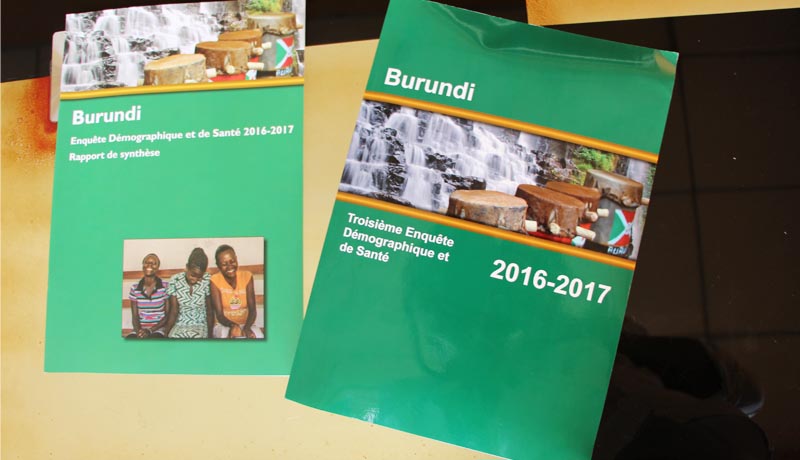“The fertility level decreased from 6.9 children per woman in 1987 to 6.4 children in 2010 and to 5.5 children in 2016-2017,” reveal the results of the 2016-2017 Demographic and Health Survey conducted by the Institute of Statistics and Economic Studies of Burundi-ISTEEBU.
 According to the results of this survey, fertility ranges from 4.1 in urban areas to 5.7 in rural areas. It goes from a minimum of 3.7 children per woman in Bujumbura city to a maximum of 6.6 children per woman in Muyinga province.
According to the results of this survey, fertility ranges from 4.1 in urban areas to 5.7 in rural areas. It goes from a minimum of 3.7 children per woman in Bujumbura city to a maximum of 6.6 children per woman in Muyinga province.
According to ISTEEBU, fertility varies significantly depending on the level of education of women. “It is 6.3 per woman among non-educated women, while it is 4.1 children per woman among women having secondary or higher education.”
This survey shows that women in poor families have an average of 6 children per woman compared to 4.4 children per woman in rich families.
According to the same survey, the use of contraceptive methods has increased over the last 30 years from 9% in 1987 to 22% in 2010 and 29% in 2016-17.
Despite this decrease in the fertility rate, Nicolas Ndayishimiye, General Director of ISTEEBU says Burundian women still have a long way to go. The 2025 National Development Plan provides for 3 children per family. “Currently the fertility rate is 5.5 children per woman. Therefore, there is a need to reach 3 children per woman,” says Ndayishimiye.



















 IWACU Open Data
IWACU Open Data

